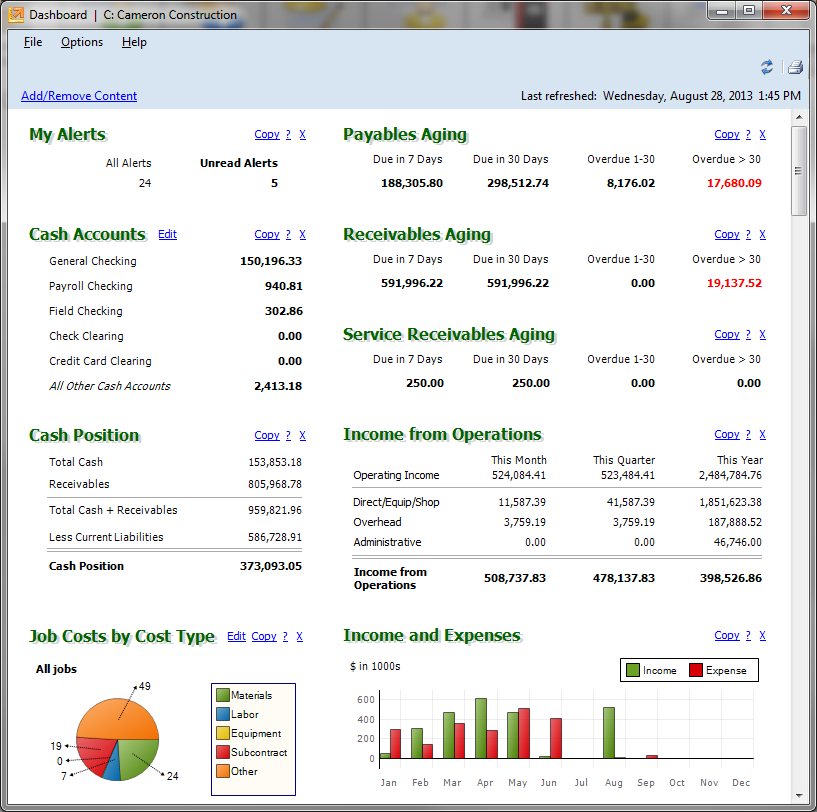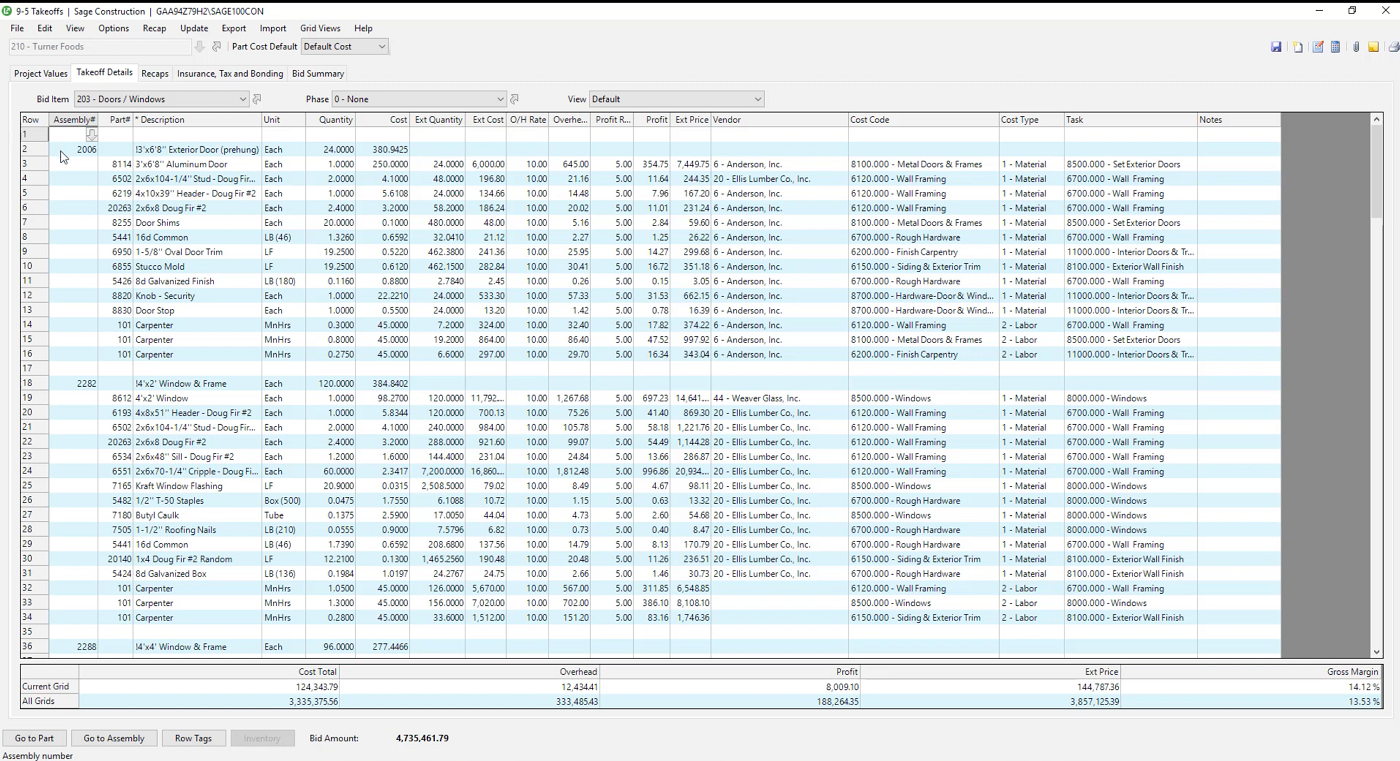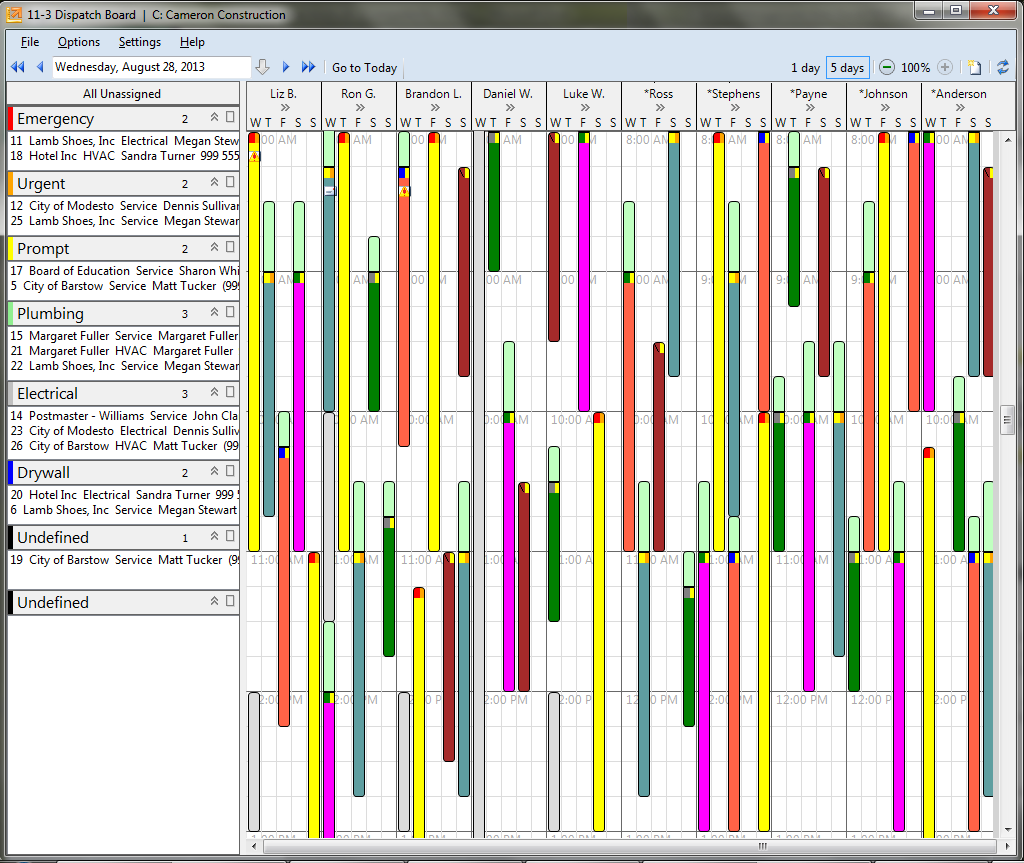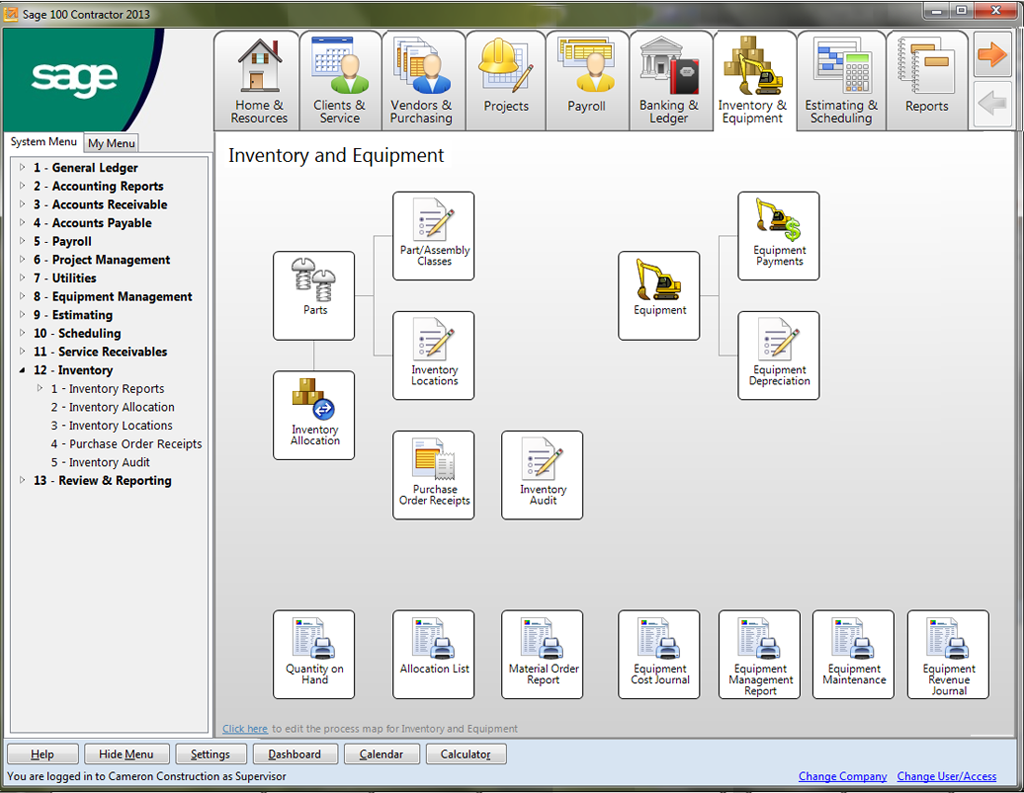
Sage 100 Contractor’s fast factsStarting price: Custom quote
|
Sage 100 Contractor is an on-premises software solution that is targeted at smaller contractors looking for an all-in-one platform, not just accounting software. While it definitely has its advantages, Sage 100 Contractor may not be the best solution for all contractors and budgets, with its key drawbacks.
In this review, we dive deep into the platform’s top features to consider its capabilities. Then, we review its pros and cons and offer some alternatives in case you decide that Sage 100 Contractor is not right for your business.
Unfortunately, Sage 100 Contractor does not publicly disclose its pricing information — you’ll need to contact its sales team for a custom pricing quote based on your needs. Sage Contractor 100 is sold on a per-license basis as opposed to a per-seat basis and is designed to be installed directly onto a computer or another device, meaning you can’t access it from anywhere through the internet alone. However, it is available to download on a mobile phone or tablet, so you can use it while out in the field as well as in the office.
The Sage 100 Contractor dashboard (Figure A) includes all the main figures: cash, accounts, cash position, payables, aging, receivables, income from operations, job cost by cost type and more. From there, you can dive deeper into the details of various jobs and check out related documents, such as billing invoices and change orders.
The interface design is extremely traditional — some even say old school, which can be a pro or a con depending on who is using it. Sage 100 Contractor definitely feels like a legacy software product, which may make it easier for people who have more experience with older systems. However, the design does feel very outdated compared to some other construction software competitors, like Buildertrend.
Sage 100 Contractor’s estimating tool uses a spreadsheet-based view that’ll be familiar to anyone used to making manual estimates in Excel. However, Sage’s estimating tool is backed by a strong cost database that includes additional capabilities, like takeoff and error checking, to ensure that calculations are correct. Once you’re done entering all your information, Sage will quickly generate an organized and professional report that can be shared with a potential client.

After your company is awarded the job, you can use Sage’s estimate tool to quickly produce a job cost budget and view estimated, actual and committed costs at every stage. Each change order update is directly tied to a job, cost code and budget, linking directly back to the appropriate estimate. You can also set up the system to send you an email alert if the change order is taking too long.
Because payroll time is integrated directly into the Sage 100 Contractor system, you can keep an eye on labor cost as well as material cost to stay on top of overages.
Sage 100 Contractor also comes with a dispatch board for scheduling work orders. Sort jobs by type and see when specific technicians are scheduled. When an emergency call comes in, the dispatch board makes it easy to find which technician is the closest so you can get it fixed faster.
You can also email work order details to technicians directly from the job board to ensure they have all the information they need. Technicians can enter their time on their phone as they complete various jobs, and that’s automatically populated in both invoicing and payroll to keep all your records up-to-date.

Sage 100 Contractor also offers an inventory module to help you keep track of all your parts and materials. Parts that appear on work orders flow to inventory to keep everything interconnected. The system will also alert you when inventory either runs out of stock or falls beneath a minimum threshold, so you can place re-orders as necessary.
You can also generate payable invoices by linking them to purchase orders. This makes it easy to see what parts you have on hand for various jobs and service calls, so you don’t accidentally schedule a call when you don’t have the parts in stock. As technicians complete their orders throughout the day, the truck stock quantity will update automatically, so they don’t have to perform inventory at the end of the day.

Sage 100 Contractor does include payroll and time tracking capabilities to keep everything centralized in one system — then you don’t have to worry about running payroll on another platform and importing the data to see how your labor costs are stacking up for various jobs. Sage 100 Contractor also supports weekly certified payroll, which is a must for contractors working on federally funded projects. Worker’s compensation is also included in Sage’s system, which automatically calculates all necessary deductions from payroll.

Sage 100 Contractor offers plenty of prebuilt reports that are specific to contracting and construction. Some examples include job cost, progress billing report, bond report, over/under billing screen, committed cost variance report, equipment management report and more. These sorts of specific contracting reports aren’t available with other more general accounting software, such as QuickBooks. And Sage’s specialized reports make it easy for contractors to stay on top of their expenses and protect their margins across various jobs.

If you already have your construction and contractor management software figured out and you’re just looking for affordable accounting software, then look at Zoho Books. This bookkeeping software offers six different pricing plans, including a forever free tier for businesses with less than $50,000 in annual revenue, which makes it extremely scalable for contractors of all sizes.
Depending on what pricing plan you opt for, you’ll get access to features such as recurring expenses, mileage tracking, expense tracking, timesheets, billing, budgeting and more. If you were looking at QuickBooks but were put off by the more expensive pricing plans, then Zoho Books could be a good alternative for your needs.

If you like the sound of Sage 100 Contractor but it’s not advanced enough for your needs, then consider Sage 300 CRE instead. This Sage offering is for midsize and large contractors and construction and real estate firms. Like Sage 100 Contractor, Sage 300 CRE is meant to be an on-premises solution that is deployed on your own machines.
Features include general ledger management, advanced accounts, accounts payable and receivable functions and job costing. You could add on other features such as payroll, time tracking and CRM to increase its functionality even further.

If you’re looking for a cloud-based solution that was built with the construction industry in mind, Buildertrend is definitely worth a look. Its pricing plans are completely transparent and start at $499 per month, and each plan gets unlimited projects and users. Features include project management, subcontractor management, time management, task management and more.
Buildertrend also offers additional tools, such as native email marketing, messaging and a customer portal, to help you advertise your business and stay in touch with clients. While it doesn’t offer payroll, it does integrate with multiple popular payroll apps, so your systems sync up together.
To review Sage 100 Contractor, we watched demo videos, read through installation guides, consulted product documentation and looked at user reviews. We considered factors such as pricing and transparency, user interface, design and customer service. We also weighed specific features such as estimates, job costing, proposals, contractor management, dispatch, scheduling, inventory, payroll, time, tracking and reports.